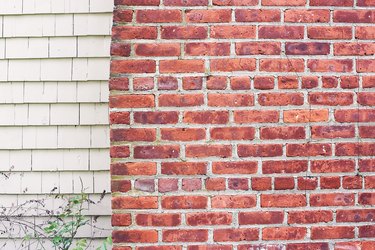
Homeowners drill holes in brick walls for a variety of reasons, including running cable, electrical wires or pipes through the wall. Changing the location of the cable, wire or pipe leaves a gaping hole through the brick wall where water, dirt and debris enter the structure. Some holes pass through the mortar joint, while others penetrate through the brick itself. Repair methods vary, depending on the size and location of the hole.
Mortar Joint Holes
Video of the Day
Step 1
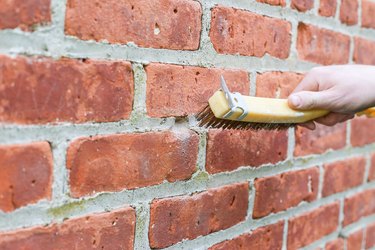
Brush the surface and inside of the hole with a stiff wire brush to remove loose bits of mortar. Sweep the surface and inside of the hole with a paintbrush or small broom to remove the dust. You can also blow compressed air into the hole to remove the dust.
Video of the Day
Step 2
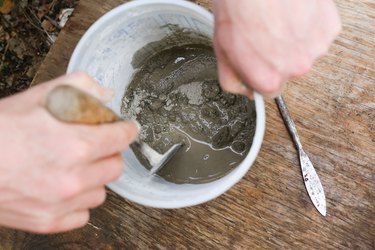
Mix mortar and water in a bucket to form a thick paste.
Step 3
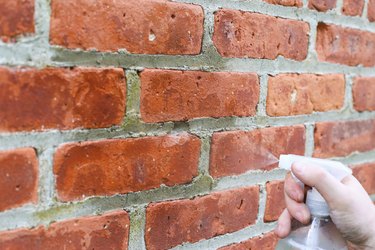
Fill a spray bottle with water. Mist the surface and inside of the hole to saturate the existing mortar.
Step 4
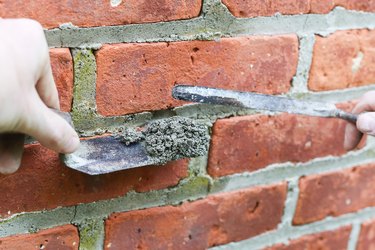
Pick up mortar with a small pointing trowel. Force the mortar into the hole, packing it in tightly and filling the hole to flush with the existing mortar.
Step 5

Shape the mortar patch with the appropriate pointing tool so it resembles the existing mortar joint.
Brick Holes -- Mortar
Step 1
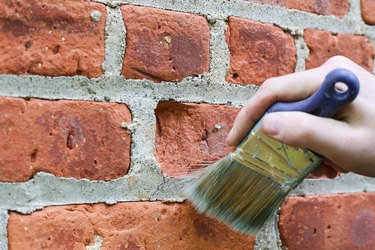
Clean the inside of the hole and surface of the brick with a stiff wire brush. Sweep or blow the dust and debris out of the hole and off the brick surface.
Step 2
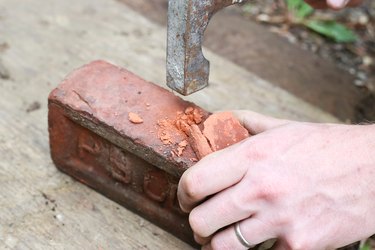
Add mortar mix, water and a matching-color brick dust or concrete pigment to a bucket. Stir the ingredients and continue to add brick dust or pigment until the mortar color matches the existing brick. If you are unable to find the right color of brick dust, pulverize a correctly colored brick into dust with a masonry hammer. Set the brick on a hard surface, chip off pieces of brick and strike the pieces with the masonry hammer. Sweep up the dust and save it to add to the mortar.
Step 3

Fill a spray bottle with water. Spray the hole and surface of the brick to saturate it.
Step 4
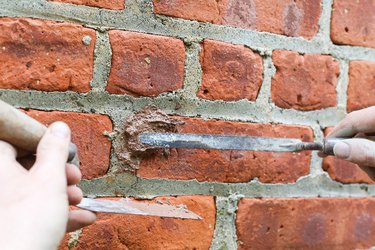
Pick up the mortar with a pointing trowel or margin trowel, and tightly pack the mortar into the hole until it sits just above the existing brick.
Step 5
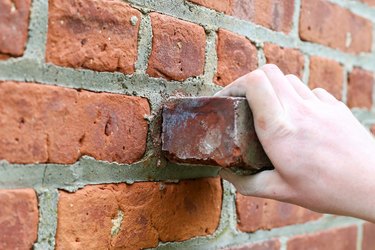
Place a brick over the patch and press the brick forcefully into the patch to create a brick texture in the mortar.
Brick Holes -- Silicone Caulk
Step 1
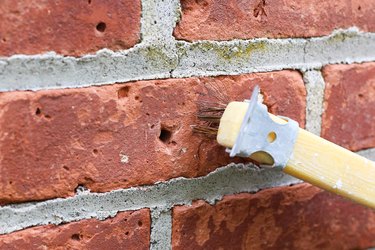
Brush the inside of the hole and brick with a stiff wire brush to remove loose pieces of brick and debris. Blow compressed air in the hole to remove dust and debris.
Step 2
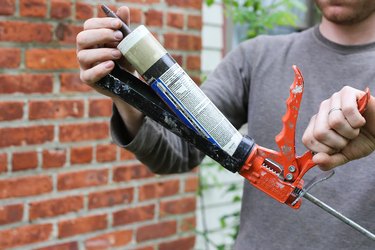
Place a tube of exterior-grade colored silicone caulk into a caulking gun, or use a squeezable tube of caulking compound.
Step 3
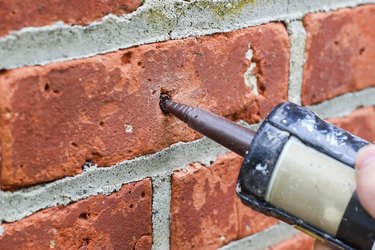
Insert the tip of the caulking tube into the hole. Squeeze the caulk into the hole to fill it flush with the existing brick.
Step 4

Place brick dust on a trowel. Hold the trowel up to the brick at a 90-degree angle, tilt the trowel up toward the silicone caulk and press the dust into the wet silicone caulk to match the color and texture of the existing brick.